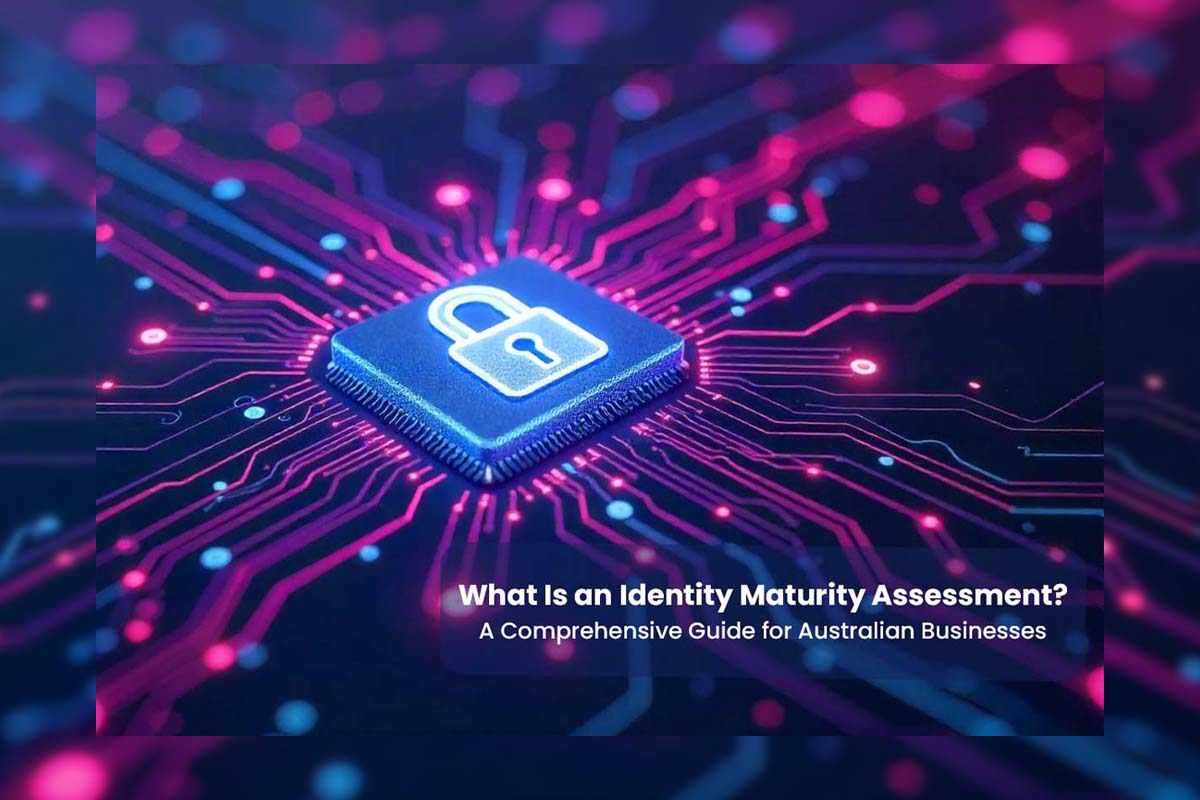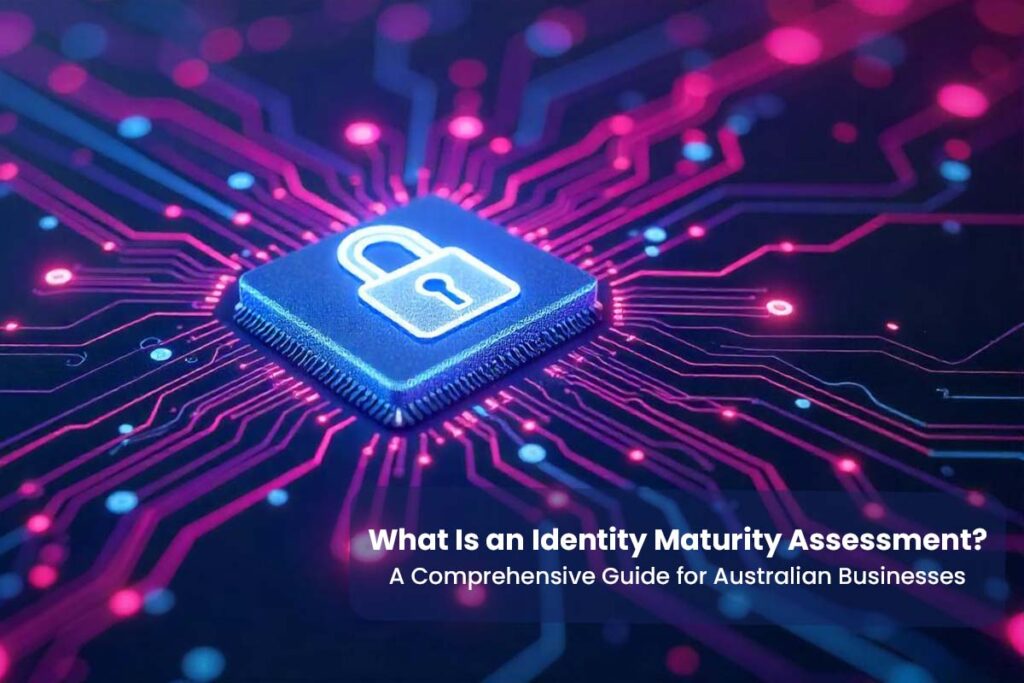





Identity Maturity Assessment (IMA) has become a vital tool for Australian businesses striving to strengthen their security frameworks and streamline their operations. With identity-related breaches accounting for over 60% of all cyberattacks globally in 2023, organisations can no longer overlook the importance of effective identity management. IMA provides a structured approach to evaluate and enhance an organisation’s Identity and Access Management (IAM) strategies, ensuring they are robust enough to mitigate threats while supporting operational goals.
Effective identity management goes beyond mere compliance; it is foundational for enabling seamless access to systems, securing sensitive data, and maintaining trust with stakeholders. For Australian businesses, which face stringent regulatory requirements and a dynamic threat landscape, an IMA offers the insights needed to identify vulnerabilities and drive continuous improvement. By integrating IMA into their security strategies, organisations can safeguard their digital environments, improve productivity, and lay the groundwork for long-term resilience.
An Identity Maturity Assessment (IMA) is a systematic framework designed to evaluate an organisation’s capabilities in managing digital identities and access rights. It offers a structured analysis of the policies, processes, and technologies that underpin identity and access management (IAM) systems, providing valuable insights into areas of strength and improvement.
The primary purpose of an IMA is to assess the effectiveness of identity governance—how organisations manage the lifecycle of identities, enforce access controls, and respond to security threats. By examining key aspects such as authentication methods, access provisioning, and role-based access controls, an IMA identifies gaps that may expose the organisation to risks such as unauthorised access or regulatory non-compliance.
IMA is deeply connected to IAM, serving as both a diagnostic tool and a roadmap for optimisation. While IAM systems enforce security protocols and control access, IMA evaluates how well those systems are implemented and aligned with organisational goals. For instance, it helps businesses determine whether their IAM strategies support secure cloud adoption, enable remote work, or comply with regulatory requirements.
By conducting an IMA, organisations can better understand their identity management maturity, prioritise improvements, and implement best practices to enhance their security posture and operational efficiency.
Identity Maturity Assessment (IMA) categorises an organisation’s identity and access management (IAM) capabilities into distinct maturity levels, each representing varying degrees of sophistication and effectiveness. These levels—Ad Hoc, Defined, and Optimised—highlight the organisation’s progress toward robust identity governance and security.
At the Ad Hoc level, IAM processes are unorganised, reactive, and often lack formal documentation. Identity provisioning and de-provisioning are manual, prone to delays, and susceptible to errors. Organisations at this stage frequently face security vulnerabilities, such as orphaned accounts or excessive permissions. Operational efficiency is compromised due to a lack of standardised procedures, leading to resource inefficiencies and increased risks of unauthorised access.
Organisations at the Defined level have established policies and processes for IAM, though their implementation may be incomplete or inconsistent. Key IAM activities, such as access reviews and role-based access controls (RBAC), are partially automated but not fully optimised. While security improves at this stage, gaps in coverage and enforcement remain. Operational efficiency is enhanced compared to the Ad Hoc stage, but there is still room for improvement in scalability and compliance.
The Optimised level represents the pinnacle of IAM maturity. Processes are proactive, automated, and consistently enforced across the organisation. Advanced capabilities, such as adaptive authentication and continuous monitoring, ensure robust identity security. Operational efficiency reaches its peak as automation reduces manual intervention, minimises errors, and supports scalability. Organisations at this level are well-equipped to adopt advanced security frameworks like zero trust.
An Identity Maturity Assessment (IMA) provides significant advantages for businesses aiming to enhance their identity and access management (IAM) strategies, reduce security risks, and ensure compliance with regulations such as the Australian Privacy Act and GDPR.
IMA enables organisations to evaluate the effectiveness of their IAM policies, tools, and practices. By identifying gaps, businesses can implement improvements, such as adopting multi-factor authentication (MFA) and role-based access controls (RBAC). These enhancements ensure that only authorised personnel access sensitive systems, bolstering overall security.
With identity-related breaches continuing to rise, robust identity management is essential. According to Gartner, organisations with optimised IAM frameworks are 50% less likely to experience unauthorised access incidents. IMA helps businesses proactively address vulnerabilities, such as dormant accounts or overprivileged users, significantly reducing the likelihood of breaches.
Non-compliance with regulations can result in severe financial and reputational repercussions. An IMA assists organisations in aligning their IAM practices with regulatory standards by identifying areas of non-compliance and providing actionable recommendations. This reduces audit-related challenges and potential penalties.
IMA streamlines identity lifecycle management by highlighting inefficiencies in onboarding and offboarding processes. For example, businesses implementing IMA have reported faster provisioning of access rights for new hires and timely revocation of access for departing employees, improving both security and operational efficiency.
| Aspect | Before IMA | After IMA |
|---|---|---|
| Access Provisioning Time | 5-7 days | 1-2 days |
| Dormant Accounts | High (10% of users) | Low (<2% of users) |
| Compliance Audit Readiness | Reactive and inconsistent | Proactive and systematic |
| Unauthorised Access Incidents | Frequent | Rare |
By leveraging IMA, businesses can improve their IAM strategies, secure their digital assets, and achieve compliance, positioning themselves for sustainable success.
The effectiveness of an Identity Maturity Assessment (IMA) can be observed through the measurable improvements achieved by organisations that have embraced this framework. These real-world examples highlight the value of IMA in overcoming identity management challenges and strengthening security postures.
A leading Australian retail chain faced challenges with identity sprawl, where multiple accounts and permissions for the same users existed across various systems. This lack of visibility increased the risk of unauthorised access and non-compliance with the Australian Privacy Act. After conducting an IMA, the company implemented role-based access control (RBAC) and consolidated duplicate accounts. The result was a 30% reduction in unauthorised access incidents and improved operational efficiency by automating access provisioning processes.
A multinational financial institution struggled to meet compliance requirements under GDPR due to inconsistent identity lifecycle management. An IMA highlighted gaps in onboarding and offboarding processes, which left dormant accounts vulnerable to exploitation. By streamlining identity workflows and integrating multi-factor authentication (MFA), the institution not only achieved compliance but also reported a 40% decrease in identity-related security incidents.
An Australian healthcare provider encountered difficulties securing remote access for its workforce, particularly during the shift to telehealth services. An IMA revealed that the organisation lacked conditional access policies for remote users. By addressing these gaps, implementing adaptive authentication, and deploying identity monitoring tools, the provider significantly reduced unauthorised access attempts while ensuring uninterrupted service delivery.
These examples underscore the tangible benefits of leveraging IMA, from reducing security risks to achieving compliance and operational excellence. For more insights, refer to trusted sources such as Microsoft Identity Stories, which document successful IAM transformations worldwide.
Embarking on an Identity Maturity Assessment (IMA) is a strategic step for organisations seeking to strengthen their identity and access management (IAM) frameworks. The process involves three key stages:
Begin by evaluating your organisation’s existing IAM practices against established maturity models. Identify whether your systems are operating at an ad hoc, defined, or optimised level. This assessment provides a baseline for measuring progress and highlights immediate vulnerabilities, such as weak authentication protocols or inconsistent identity governance.
Use the insights from the assessment to pinpoint gaps in processes, tools, and policies. For instance, organisations may discover a lack of role-based access control (RBAC) or insufficient identity lifecycle management. Addressing these deficiencies is critical to reducing security risks and ensuring regulatory compliance.
Create a detailed action plan to improve your IAM strategies. This roadmap should outline priority initiatives, such as implementing multi-factor authentication (MFA), automating identity workflows, and enhancing monitoring capabilities. Set measurable goals to track progress and ensure alignment with business objectives.
For Australian businesses, consulting with IAM experts or leveraging tools designed for identity assessments can streamline the process and yield better outcomes. Engage professionals to ensure that your IMA aligns with compliance requirements and industry best practices.
Take the first step toward optimising your IAM strategies today. Visit Fort1 Identity Maturity Assessment Services for tailored solutions to secure your organisation and improve identity management effectively.

Fort1 provides comprehensive cybersecurity solutions tailored to protect your business from evolving digital threats. With expertise in penetration testing, dark web monitoring, and managed detection services, we empower organisations to stay secure and resilient in the face of modern cyber challenges.
Copyright @2024 Fort1. All Rights Reserved by Fort1.